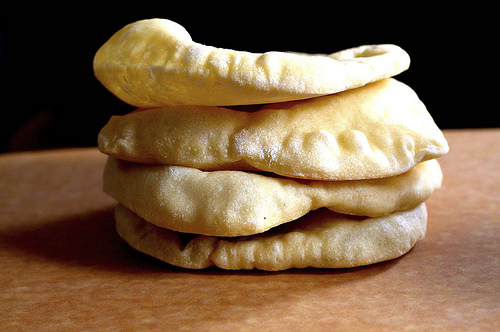
Ingredients
- 3 C. plus a scant 1/4 C. unbleached all-purpose flour
- 2 t. salt
- 2 t. instant yeast (rapid rise)
- 2 T. olive oil
- 1 1/4 C. water, room temperature
Directions
- <b>Mixer method:</b> In the bowl of a stand mixer, combine all the ingredients. With the paddle attachment, mix on low speed (#2 if using a KitchenAid) just until all the flour is moistened, about 20 seconds. Change to the dough hook, raise the speed to medium (#4 KitchenAid), and knead for 10 minutes. The dough should clean the bowl and be very soft and smooth and just a little sticky to the touch. Add a little flour or water if necessary.
- <b>Hand method:</b> In a large bowl, combine all the ingredients except for a scant 1/4 cup of the flour. With a wooden spoon or your hand, mix until all the flour is moistened. Knead the dough in the bowl until it comes together.
- Sprinkle a little of the reserved flour onto the counter and scrape the dough onto it. Knead the dough for 5 minutes, adding as little of the reserved flour as possible. Use a bench scraper to scrape the dough and gather it together as you knead it. At this point it will be very sticky. Cover it with the inverted bowl and allow it to rest for 5 to 20 minutes. (This rest will make the dough less sticky and easier to work with.)
- Knead the dough for another 5 to 10 minutes or until it is soft and smooth and just a little sticky to the touch. Add a little flour or water if necessary.
- Let the dough rise: Using an oiled spatula or dough scraper, scrape the dough into a 2-quart or larger dough-rising container or bowl, lightly greased with cooking spray or oil. Press the dough down and lightly spray or oil the top of it. Cover the container with a lid or plastic wrap. With a piece of tape, mark the side of the container at approximately where double the height of the dough would be. Refrigerate the dough overnight (or up to 3 days), checking every hour for the first 4 hours and pressing it down if it starts to rise.
- Preheat the oven: Preheat the oven to 475°F one hour before baking. Have an oven shelf at the lowest level and place a baking stone, cast-iron skillet, or baking sheet on it before preheating.
- Shape the dough: Cut the dough into 8 or 12 pieces. Work with one piece at a time, keeping the rest covered with a damp cloth. On a lightly floured counter, with lightly floured hands, shape each piece into a ball and then flatten it into a disk. Cover the dough with oiled plastic and allow it to rest for 20 minutes at room temperature.
- Roll each disk into a circle a little under 1/4 inch thick. Allow them to rest, uncovered, for 10 minutes before baking.
- Bake the pita: Quickly place 1 piece of dough directly on the stone or in the skillet or on the baking sheet, and bake for 3 minutes. The pita should be completely puffed but not beginning to brown. The dough will not puff well if it is not moist enough. See how the pita puffs, then, if necessary, spray and knead each remaining piece with water until the dough is soft and moist; allow to rest again and reroll as before.* (However, those that do not puff well are still delicious to eat.)
- <b>To cook the pitas on the stove top:</b> Preheat a griddle or cast-iron skillet over medium-high heat. Lightly grease the surface and cook the pitas one at a time. Cook for about 20 seconds, then turn the dough and continue cooking for 1 minute or until big bubbles appear. Turn the dough again and cook until the dough balloons. If the dough begins to brown, lower the heat. The entire cooking process for each pita should be about 3 minutes.